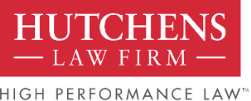Chances are if a home was built before the mid-1960s to late 1970s in North Carolina, it used oil heat as fuel for the furnace and stored the oil in an underground storage tank (“UST”). Luckily, most oil heating systems have been replaced with newer systems fueled by electricity or natural gas. Although heating systems have changed, many homes still contain USTs buried underground that may still contain oil. Over time, USTs can corrode leading to oil leaks, contaminated soil and contaminated groundwater. For this reason, today’s buyers and sellers need to be aware of the status of underground oil tanks on older properties.
On September 18, 2015, North Carolina passed new regulations regarding non-commercial underground storage tanks. The new regulations require the homeowner to report signs of an oil leak within 24 hours of discovery to the local North Carolina Department of Environmental Quality (“Department”). The regulations also state a homeowner is not required to take immediate action (with the exception of emergency situations) to clean-up the site until the Department has classified the risk posed by the oil leak. Emergency situations or responses include leaks that may lead to fire, explosion, vapor hazards or harm the public health, safety or drinking water supply. The Department will classify the leak as “High Risk” if the leak harms human health or the environment. If the oil leak does not present an unacceptable risk, the Department will classify the leak as “Low Risk” and the homeowner can obtain a closure of the incident with a Notice of Residual Petroleum which places restrictions on future property usage including prohibiting excavation in or around the site area and the operation of drinking water wells or installation or new water supply wells.
Without the presence of a leak, a homeowner of a non-commercial UST is not required to test the soil around the underground tank. Voluntary testing may be performed at the expense of the requesting party. The State of North Carolina no longer reimburses homeowners for the costs associated with UST clean-up for leaks discovered after October 1, 2015. Although soil testing and tank removal is not required for “Low Risk” tanks in North Carolina, the Department policy still recommends that inactive USTs be cleaned and removed from the ground when possible. At a minimum, homeowners should think about pumping and capping the UST if removal is not an option.
If you own an older home or plan on buying one, you will want to know if a UST is located on the property. For sellers, it may be harder to sell your property if you are unable to show the UST was either properly removed, cleaned/capped or the soil is free of oil leaks. Failure to address the UST could make it more difficult to sell your property and ultimately cost you time and money since buyers can be reluctant to buy properties with USTs.
Published on January 25, 2018.
